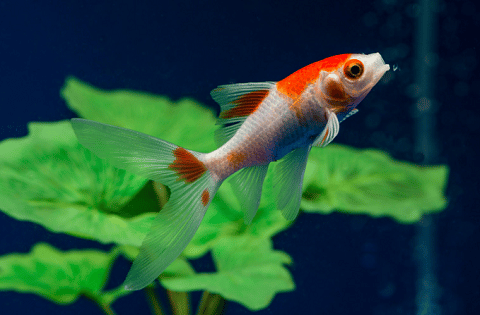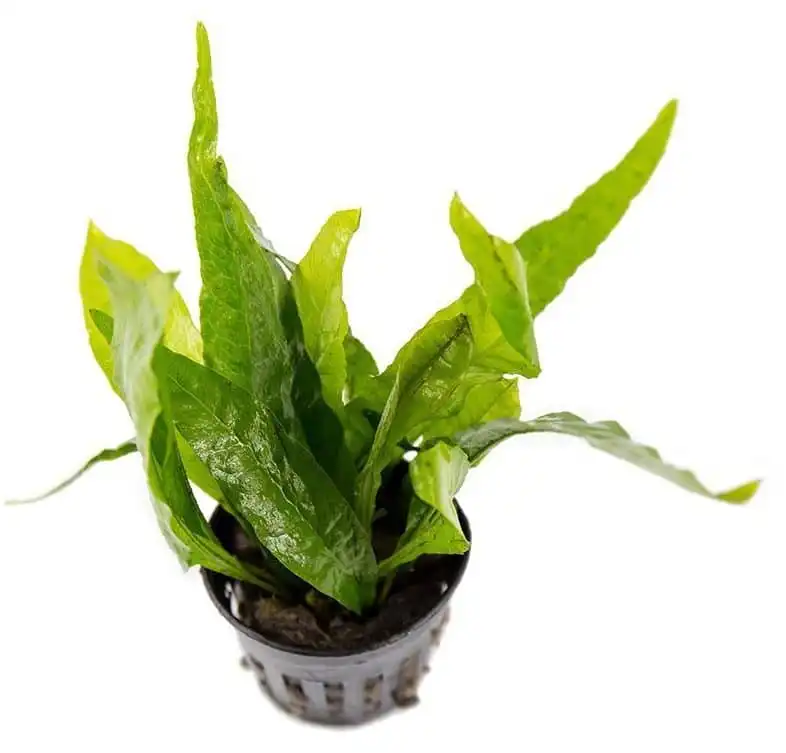Thank you for visiting! By the way… any links on this page that lead to products on Amazon and other stores/partners are affiliate links Aquarium Store Depot earns a commission if you make a purchase.
Welcome to my aquarium blog, fellow fishkeeper 🐟!
Have you seen a Hillstream Loach and wondered why they look the way they look and if you could own them? Or you landed on here because you had no idea what they are? These fish are like your typical sucker fish but with more of a coolness factor, and they are smaller to boot.
While these fish are relatively mellow, they have specific requirements that you need to play attention to for them to thrive. With the knowledge drops I’ll offer today, you will be ready to embark on keeping these unique fish in your aquarium.
Let’s learn all we can about this odd-looking fish. Time to dive in!
Key Takeaways
- The Hillstream Loach is a peaceful fish that grows up to 3 inches
- It is a social fish that prefers to be kept in groups
- They are bottom-dwelling fish that will eat pest snails
- They will not bother plants and are great for aquascapes
Introduction to Hillstream Loaches
Hillstream loaches might not be found on a top 10 freshwater fish to buy list, but that doesn’t mean that they don’t make a great addition to any beginner or expert aquarium! These fish are one of the most attractive algae-eating species available, but they have some special requirements when it comes to their tank setup and feeding. It’s also important to note that these are expensive fish, with individual fish fetching upwards of $10-$20.
In general, the hillstream loach, scientifically known as Sewellia lineolata, is considered a coldwater species that prefers water temperatures in the mid 60s to low 70s. This makes them compatible with goldfish and cooler-water fish, like white cloud minnows (Tanichthys albonubes) and zebra danios (Danio rerio); they especially like being kept in small groups with one another. That being said, many hobbyists have successfully kept these fish with typical tropical fish in water temperatures up to 80° F.
The common name ‘hillstream loach’ also refers to the overall Balitoridae scientific family instead of the singular species; this group may also be known as river loaches. From this family, many members of the Sewellia genus are available for trade in the aquarium hobby.
Appearance
The appearance of the hillstream loach can tell you everything you need to know about the natural habitats of this fish. These fish are undeniably flat!

The flat body of the hillstream loach and its strong suckermouth are designed to keep these fish attached to hard surfaces when up against a strong water current. Their flattened fins allow them to scoot across these surfaces and the substrate without having to swim up into the water column, where they would easily be pushed away. All these features make these loaches resemble tiny little freshwater stingrays!
Hillstream loaches have unique reticulated black and yellowish-green spots and stripes that help them blend in against sandy and rocky surfaces. They have very short barbels that help them locate food.
It can be near impossible to tell male hillstream loaches apart from females, especially if trying to differentiate between juveniles. Adult hillstream loaches can be told apart due to the broadness of their heads. Females have very broad heads that are nearly the same width as their pectoral fins. Males have square heads that stick out from the rest of the body. Male hillstream loaches also develop ‘fences’, or small raised bumps, along their pectoral fin and head area.
How Big Do They Get?
Adult hillstream loaches only grow to about 3 inches. As we’ll see though, these small fish like to be kept in groups which can start to increase bioload.
Are They A Type of Pleco?
At first glance, it’s easy to confuse a hillstream loach with a pleco fish from the Loricariidae family. However, hillstream loaches and plecos are not even remotely related. In fact, their similarities end with their matching colors and body shapes.
The differences begin when they diverge as different taxonomic species at the order level, where hillstream loaches are members of the Cypriniformes family and plecos are members of the Loricariidae family. The biggest difference between these two fish is that hillstream loaches originate from Southeast Asia, while plecos are found throughout South America. Other morphological differences also become apparent when put side to side.
An Overview of the Fish Species
| Scientific Name | Sewellia lineolata |
| Common Names | Reticulated hillstream loach, Hillstream loach, Tiger hillstream loach, Vietnamese hillstream loach, Gold ring butterfly sucker |
| Family | Balitoridae |
| Origin | Vietnam, Laos, Cambodia |
| Diet | Omnivore |
| Care Level | Moderate |
| Activity | Low Activity |
| Lifespan | 5 to 10 years |
| Temperament | Peaceful |
| Tank Level | Bottom |
| Minimum Tank Size | 20 gallons |
| Temperature Range | 64 – 80° F |
| Water Hardness | 10 – 15 KH |
| pH Range | 6.5 – 7.5 |
| Filtration/Water Flow | High |
| Water Type | Freshwater |
| Breeding | Egg Layer |
| Difficulty to Breed | Moderate |
| Compatibility | Community tanks |
| OK, for Planted Tanks? | Yes |
Origin and Habitat
Take a guess where the hillstream loach originates. If you answered with hill streams, then you’d be correct!
Hillstream loaches come from shallow and well-oxygenated, fast-moving rivers and streams throughout Vietnam, Laos, and Cambodia1. They’ve been documented in some veins of the famous Mekong River, which houses some of the largest freshwater fish ever recorded.
Due to the high water flow of these waterways, the substrate is usually composed of smooth rocks and gravel. Because of this intense water movement, most plant species cannot take root. Instead, these shallow areas receive high amounts of sunlight, facilitating biofilm and other algae growth for hillstream loaches to feed on.
Hillstream Loach Care
Hillstream loaches are considered a moderate fish species to keep in terms of difficulty. These are peaceful freshwater fish that have a few specific requirements, though they might be more adaptable than we think.
Are They Hard to Keep?
There are a few reasons why hillstream loaches are considered more difficult to keep than your average tropical fish, but there are a few myths behind their care too.
One of the main reasons the hillstream loach might be seen as a difficult species to keep is due to its price tag–it’s true! These fish are expensive to buy, and so logic follows that they’re hard to keep. Unfortunately, this creates a lot of rumors about these fish and limits them to a certain group of hobbyists.
Another reason why hillstream loaches are seen as difficult is that many hobbyists believe they only do well in fish tank setups that match the exact parameters as seen in their natural habitat ecosystems. This includes oxygen-rich water with high currents and lots of biofilm. While these conditions should try to be met as best as possible, it’s been proven that they’re not necessary to ensure that hillstream loaches thrive.
In fact, a hillstream loach tank can look very different from one hobbyist to another. Some people keep them with coldwater goldfish, while others keep them with typical tropical fish species. Like all other fish species, the key to keeping these beautiful loaches is maintaining water parameters and quality.
Aquarium Setup
A hillstream loach tank can look like a lot of different things. These are versatile fish that can be kept in various aquarium setups.
There are four main hillstream loach aquarium setups you can consider:
1. Goldfish Tank
Hillstream loaches originate from cool waters, which allow them to live in the lower temperatures preferred by goldfish. However, there are a few things that need to be considered before just throwing these loaches in with any goldfish. Hillstream loaches still prefer well-oxygenated, fast-flowing water with stable parameters. Many fancy goldfish cannot swim against an overly strong current, and large goldfish can create a lot of waste that creates instability in water chemistry.

If planning on keeping hillstream loaches with goldfish, only keep goldfish breeds capable of swimming against a strong current while also maintaining water quality. This aquarium setup should have minimal decorations to meet goldfish requirements, but still have some structures for your loaches to hide and graze.
2. Coldwater Setup
Goldfish aren’t the only type of coldwater fish. A coldwater fish tank can house a variety of fish and plant species that prefer cooler temperatures. These setups can be complex or straightforward in design, but plenty of space and the surface area should be allotted to your loach.
3. River Tank
A river tank is the most natural habitat you could give your hillstream loach. This aquarium setup would mimic the fast-moving, boulder-filled streams and rivers these fish originate from. Powerful filtration and powerheads circulate water to create a constant current that agitates the surface water to introduce oxygen. Plants would be minimal, with intense lighting that facilitates algae growth.
4. Tropical Community Tank
Lastly, hillstream loaches can be kept in a community tank setting. You may be wondering how to keep a coldwater species in warm water temperatures, but these fish are surprisingly adaptable. Most hillstream loaches have adapted to aquarium water parameters, meaning that they can comfortably survive in water temperatures up to 80° F.

These community tanks can be filled with your favorite tetras, rasboras, and featured fish. However, make sure to ask the previous owner the water temperature at which your fish was being kept so that you can acclimate it correctly.
There are many ways that you can keep a hillstream loach in your aquarium. There are a few additional rules to keeping them safe within your setup, though.
One thing to consider is that hillstream loaches are agile fish that have the ability to travel upstream and over waterfalls. The glass wall of an aquarium is no feat and they can easily travel their way up the side and out. To help prevent this, make sure to use a tight-fitting aquarium lid.
Another thing to consider is that these fish are relatively delicate. They also have very strong suckermouths that can easily become attached to a filter intake or other equipment. Make sure to use a filter guard to prevent this from happening while also giving your fish more room to graze!
Tank Size
The hillstream loach is a relatively small fish that stays on the bottom of the aquarium. However, they are relatively active and appreciate plenty of room for grazing on algae so they won’t do well in an overly small tank.
What Size Tank Do They Need?
The best tank size for a small group of 3 hillstream loaches is 20 gallons; a longer tank will provide more open swimming space and surfaces for algae to grow for your loaches. Some hobbyists keep a single hillstream loach in a 10 gallon fish tank, but these fish do best when kept in groups.
Aqueon's 20 gallon aquarium kit offers all the basics to start off on the right foot.
Any aquarium larger than 20 gallons will comfortably house hillstream loches as long as there is enough room for adequate water flow and filtration. You will also need to consider which hillstream loach tank mates you plan on keeping and if you want to keep them in a group. These fish are very sociable with each other, but will largely leave other fish unbothered.
Water Parameters
Hillstream loaches aren’t necessarily sensitive fish, but they will thrive when freshwater aquarium conditions are stable. They should be kept in a mature tank with 0 ppm ammonia, 0 ppm nitrite, and minimal nitrates. Hillstream loaches can adapt to a wide range of pH and hardness levels but do best in water that tests between 6.5-7.5 and 10-15 KH, respectively.
Depending on the type of freshwater tank you plan on keeping your hillstream loach in, water temperature should remain stable between 64-80° F.
Filtration and Aeration
Filtration and aeration are some of the most important factors of this hillstream loach care guide. These fish come from very fast-moving waterways that are filled with oxygen! Recreating that in the aquarium can be difficult, but it’s also unnecessary.
Our Subscriber's Choice
Top name brand, Italian made, and updated design. The next gen Fluval Canisters are a best buy!
If you want to keep your hillstream loaches in a setup that resembles their natural habitats most, then you will need strong filtration and aeration. Together, a powerful filter and an aerator can create a unidirectional water flow that carries dissolved oxygen; additional wave pumps may be needed to create the desired effect. The filter will create surface movement while the wave pump pushes the rest of the water column. The aerator can be placed anywhere in the tank to help introduce additional oxygen.
Lighting
Hillstream loaches are one of the few species of bottom feeders that stays active throughout the day. These peaceful fish have diurnal sleep cycles where they are awake during the day and sleep at night. This is in contrast to most loaches and catfish that wait until the cover of night to emerge.
Remember, the hillstream loach can usually be found eating algae in shallow waters under direct sunlight. This means that they can withstand relatively high lighting intensities in the aquarium, though shade from driftwood and smooth rocks should be provided throughout the tank in case they want to hide.
Aquarium Plants and Decorations
Though tank conditions might allow for live aquarium plants with intense lighting, they’re not necessary for the success of your hillstream loach. Unlike most other fish species in the wild, hillstream loaches take shelter under rocks and other structures instead of plants.
In the aquarium, hillstream loaches will appreciate plants for coverage and shade. They will also gladly eat any algae that grow on the leaves without eating any of the healthy ones.
If keeping your hillstream loach in high-flow conditions, then you’ll need sturdy plants that can withstand the current. Some recommended species are Java fern (Leptochilus pteropus), Amazon sword (Echinodorus grisebachii), and members of Bolbitis.
Java Fern is one of the easiest and hardiest live plants you can purchase
Otherwise, the tank can be decorated with any aquarium-safe decoration of your choosing.
Tank Maintenance
This loach species isn’t the most difficult to keep, but water quality needs to be maintained. Hillstream loaches are sensitive to excess nutrients and rapid changes in parameters. Regular tank maintenance is necessary to keep nutrients down and replenish the tank water.
In general, 10-25% weekly or biweekly water changes are recommended for any tank. During water changes, the substrate can be siphoned for leftover food and other fish waste. Keep in mind that planted tanks will process nutrients better than those without any plants.
Since these fish can be kept in coldwater setups, it might be necessary to chill new water than warm it up, as most tropical fish keepers need to do otherwise.
Substrate
Hillstream loaches can be kept on a variety of substrates, but it’s important that whatever you choose doesn’t cause injury to the underside of your fish. In the wild, the substrate is eroded down by fast-moving water. This allows the smooth bodies of hillstream loaches to stay safe from jagged rocks and twigs.
The best aquarium substrate for a hillstream loach would be sand or fine gravel.
Natural sand is excellent for bottom feeder fish to forage around in.
Community Tank Mates
Though beautiful fish, a group of hillstream loaches won’t fill a tank on their own. You need tank mates that stay active in the middle and top portions of the water column! Again, the best hillstream loach tank mates will depend on the type of aquarium setup you keep them in.
For goldfish tanks, hillstream loaches will do well with active goldfish breeds that aren’t weighed down by excess finnage or appendages. For general coldwater tank setups, your loach can get along with danios and white cloud minnows.
There aren’t too many aquarium fish that originate from the exact same areas as the hillstream loach, but there are a few species that do well in a river tank setup. This includes freshwater gobies and danios as well.
Hillstream loaches can also be kept in the same tank as popular tropical fish, like tetras, gouramis, and other bottom-dwellers as long as they are with other peaceful species. They can even be safely kept with dwarf shrimp!
Aggressive and predatory fish will stress out and even injure unprotected loaches.
Are They Schooling Fish?
The reticulated hillstream loach isn’t a schooling fish, but these fish thrive when surrounded by their own species.
How many hillstream loaches you should keep in your tank depends on the size and setup of your aquarium. In general, a small group of about 3 hillstream loaches requires a minimum of 20 gallons. A group of 4 needs a slightly bigger tank.
Food and Diet
Though they greatly enjoy benthic algae, hillstream loaches are omnivores that need both meat- and plant-based foods. One of the difficult aspects of keeping hillstream loaches is ensuring they get enough to eat as other fish may eat their food before them.
Hillstream loaches will enjoy a variety of live, frozen, and freeze-dried options including brine shrimp, insect larvae, and bloodworms. They can be given algae wafers and a variety of blanched vegetables, including lettuce and cucumber, to supplement their vegetative needs.
To help make sure that your loaches are getting enough to eat, feed the rest of the tank floating fish flakes while providing your hillstream loaches with sinking food. This should keep the other fish in the aquarium distracted while your hillstream loaches eat.
Breeding Them
Hillstream loaches have been successfully bred in the aquarium hobby and are considered one of the easiest loach species to breed in general. This is great due to their high retail price!
It should be noted that hillstream loach breeding is possible in all aquarium setup types, not just coldwater ones. Differentiating males from females can also be difficult if they’re not fully mature adults.
Hillstream loaches can be bred in a separate tank or in the main display. It’s strongly believed that sudden warm to cold water temperature changes encourage spawning, which can be replicated with a succession of water changes. Eventually, the male will begin to entertain and chase the female; the male may even try to dislodge the female from her attached surface.
When ready, the couple will pair up freely in the water column. This often happens in the area with the most flow. The theory is that the fertilized eggs will be transported downstream to more relaxed water conditions. In the aquarium, this can lead to many eggs and fry being sucked up by the filter.
Once the eggs hatch, the fry should be fed infusoria. They are not able to suction themselves to surfaces as well as their parents at small sizes, so they will mainly be found along the substrate. Parents are unlikely to eat their young, but it’s still advised to separate them as soon as possible to have the most success.
Conclusion
You won’t find the hillstream loach on many top-fish-to-buy lists, but there’s no reason you can’t add one of these beautiful fish to your coldwater or tropical fish tank. Hillstream loaches originate from unique ecosystems, but they’ve adapted well to hobby tank conditions and will even be willing to breed. The only problem you may run into with these loaches is making sure they get enough to eat, but otherwise, hillstream loach care is straightforward and easy.
- About the Author
- Latest Posts
I’m thrilled that you found Aquarium Store Depot! Here you’ll find information on fish, aquariums, and all things aquatics related. I’m a hobbyist (being doing this since I was 11) and here to help other hobbyists thrive with their aquariums! I adhere to a high quality Editorial Process and Review products with real life field usage and practical analysis.









